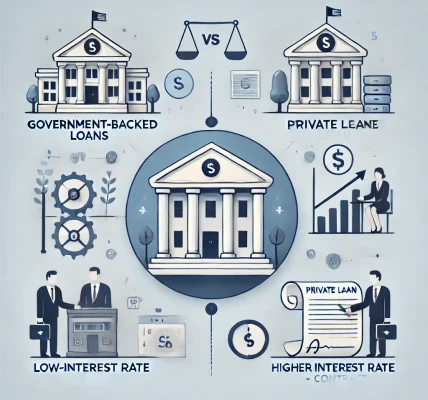Introduction
Loan policies play a critical role in determining interest rates and monthly Equated Monthly Installments (EMIs) for borrowers. These policies are influenced by various factors, including government regulations, central bank guidelines, lender strategies, and borrower creditworthiness. Understanding how these policies impact loan costs helps borrowers make informed financial decisions and manage debt effectively.
In this blog, we will explore how loan policies shape interest rates, influence EMI calculations, and what borrowers can do to secure favorable loan terms.
Factors Influencing Interest Rates and EMIs
1. Central Bank Policies and Monetary Regulations
The central bank of a country (such as the Federal Reserve in the U.S. or the Reserve Bank of India) sets the benchmark interest rates that influence borrowing costs across the economy. Key aspects include:
- Repo Rate: The rate at which banks borrow from the central bank. Higher repo rates lead to increased lending rates.
- Cash Reserve Ratio (CRR): Determines the amount banks must hold in reserve, affecting their ability to lend.
- Monetary Policies: Expansionary policies lower interest rates, while contractionary policies increase them.
2. Lender-Specific Policies and Risk Assessment
Each financial institution follows specific loan policies that affect:
- Risk-Based Pricing: Borrowers with lower credit risk receive lower interest rates.
- Loan Type Considerations: Secured loans (e.g., home loans) have lower interest rates than unsecured loans (e.g., personal loans).
- Fixed vs. Floating Rates: Some lenders offer fixed-rate loans with stable EMIs, while others provide floating-rate loans that change with market conditions.
3. Borrower’s Credit Profile
A borrower’s financial health significantly impacts the loan terms they receive. Key factors include:
- Credit Score: A high credit score (750+) leads to lower interest rates.
- Debt-to-Income Ratio: Lenders prefer borrowers with a lower ratio, indicating better repayment capacity.
- Income Stability: A stable income assures lenders of timely EMI payments, reducing risk.
4. Loan Tenure and EMI Calculation
Loan tenure plays a crucial role in EMI amounts:
- Longer Tenure: Results in lower EMIs but higher total interest paid.
- Shorter Tenure: Leads to higher EMIs but reduces the total interest cost.
- EMI Calculation Formula: Where:
- P = Loan amount
- r = Monthly interest rate (Annual Rate / 12 / 100)
- n = Loan tenure in months
5. Government Policies and Subsidies
Certain government policies influence loan interest rates and EMI affordability:
- Subsidized Loan Schemes: First-time homebuyer subsidies reduce interest rates.
- Tax Benefits: Deductions on interest payments (e.g., under Section 80C in India) lower overall cost.
- Moratorium Periods: Temporary EMI deferment during economic downturns.
How Borrowers Can Secure Lower Interest Rates and EMIs
1. Improve Credit Score
- Pay existing loans and credit card bills on time.
- Maintain a low credit utilization ratio.
- Avoid multiple loan applications within a short period.
2. Choose the Right Loan Tenure
- Balance between affordable EMIs and lower interest costs.
- Avoid excessively long tenures unless necessary.
3. Compare Loan Offers
- Evaluate interest rates, processing fees, and hidden charges.
- Consider online loan aggregators for easy comparisons.
4. Opt for a Secured Loan (if applicable)
- Providing collateral can lead to reduced interest rates.
- Home loans and car loans generally have lower rates than personal loans.
5. Negotiate with Lenders
- Existing customers with a strong repayment history can request better terms.
- Use competitive offers from other banks as leverage.
Conclusion
Loan policies significantly impact the cost of borrowing by determining interest rates and EMIs. By understanding these factors, borrowers can make informed choices, optimize their loan repayment strategy, and minimize financial strain. Staying informed about market trends, improving creditworthiness, and comparing loan options are key steps to securing favorable loan terms.




